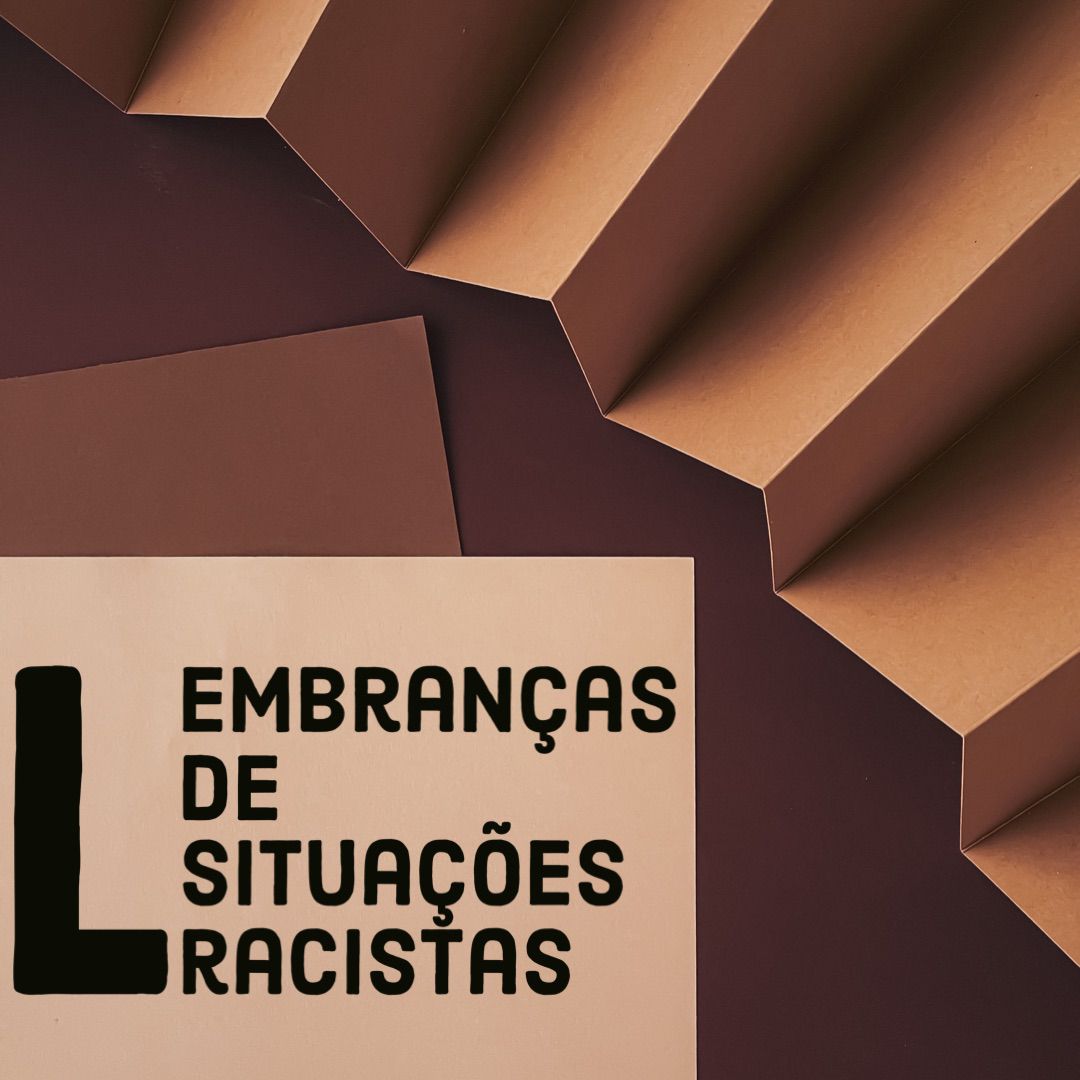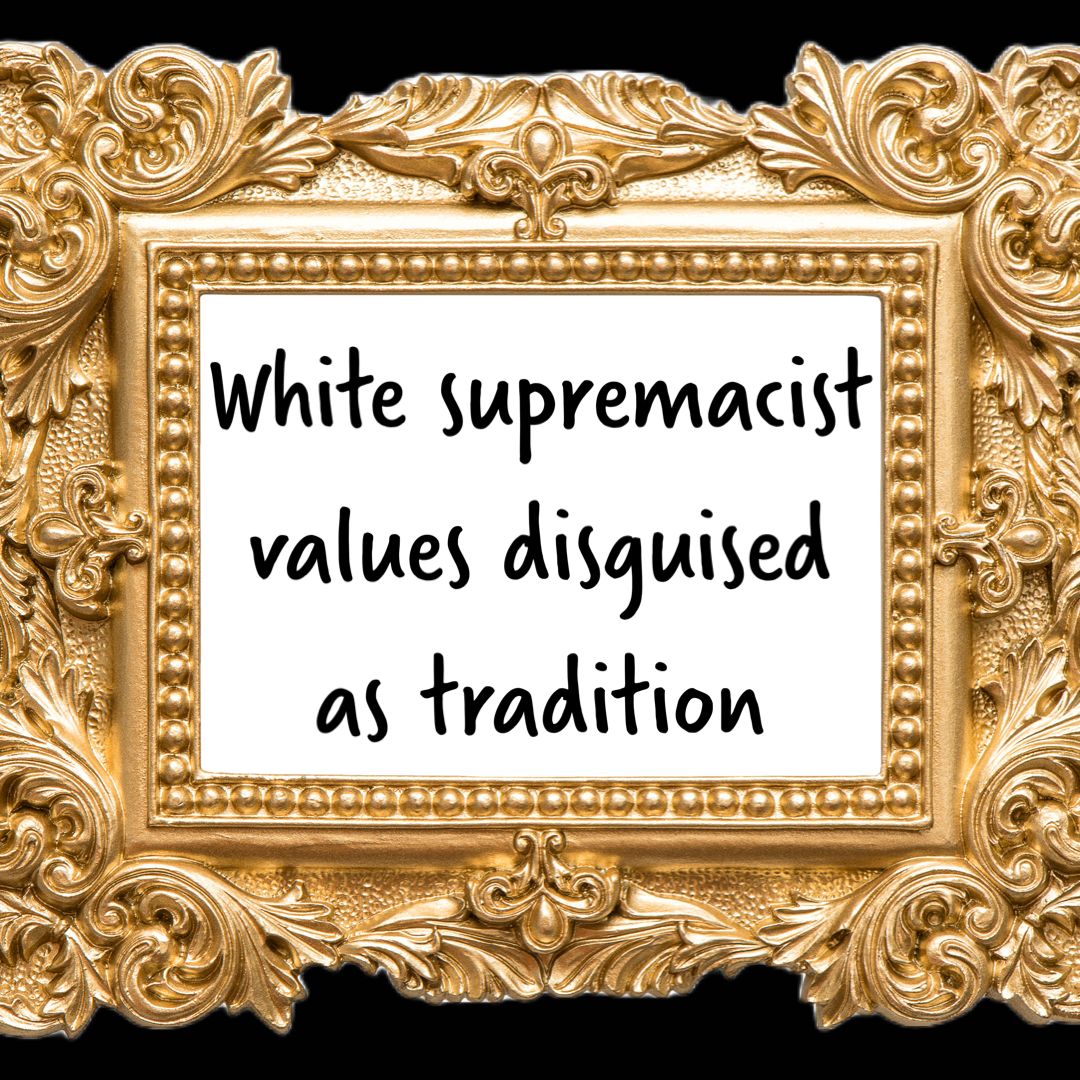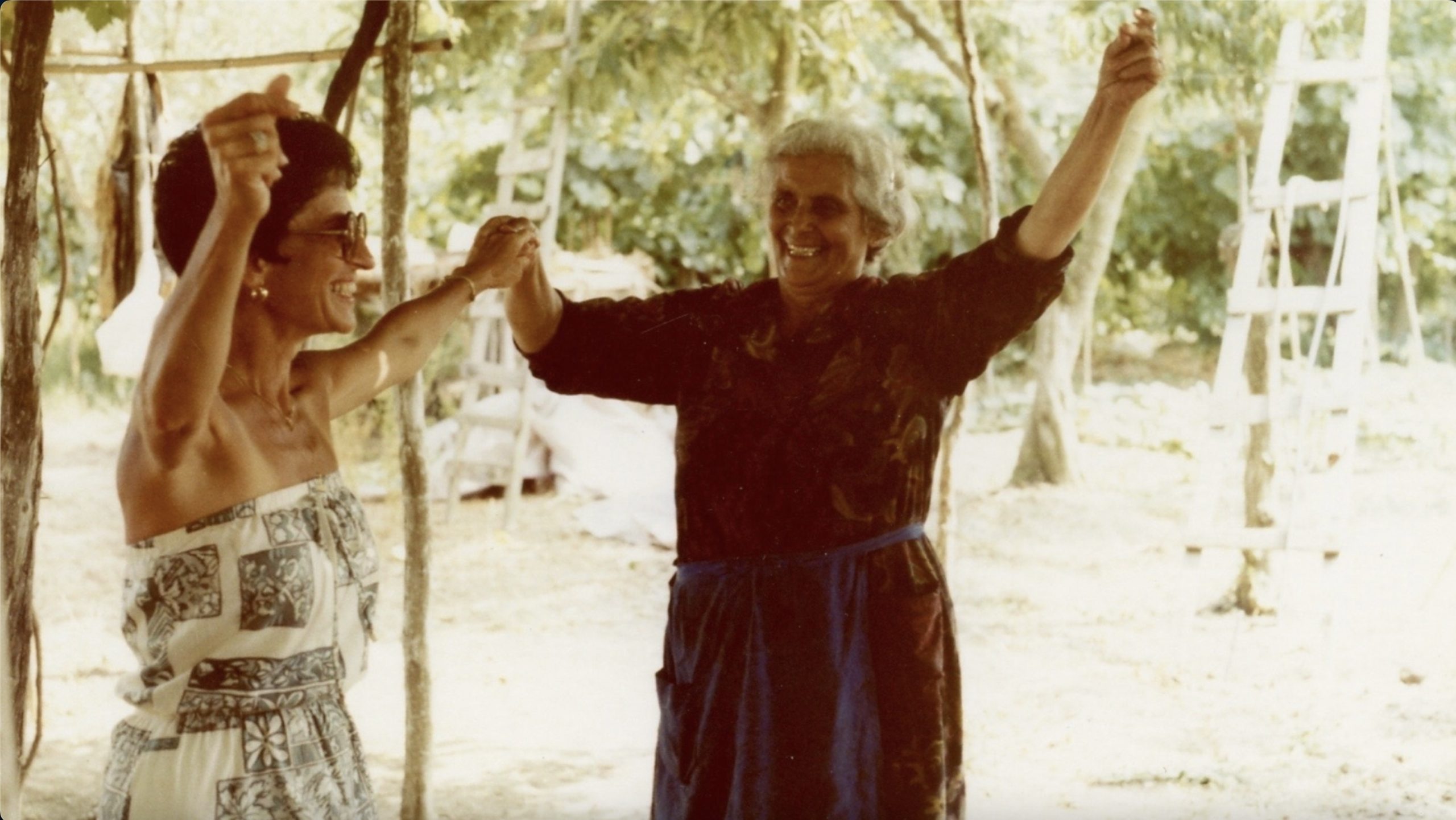Introduction
For our group project we have chosen to focus on the concepts of (in)visibility and witnessing as it relates to the ideas of memory, trauma, and performance which we have been discussing this semester. In our project, we asked classmates, friends, family, community members, and strangers to respond anonymously to prompts that encourage them to reflect on their own thoughts and experiences, as well as how they see themselves reflected (or not) in the world around them. Responses were gathered digitally through online submissions and assembled in a visual piece in an attempt to render visible those people, identities, experiences, and thoughts which were made invisible. As Judith Herman writes in Truth and Repair, there “are enduring public proclamations that tell us whom our society honors and respects. Sometimes directly, more often by omission, they also tell us who is to be dishonored and disrespected, who is to be invisible” (Herman 2023, 16). What can we learn and what can we do through making visible what society has told us should remain hidden? What possibilities does this act of witnessing open up? As Cathy Caruth advocates in Trauma: Explorations in Memory (Caruth 1995) trauma requires integration, both for the sake of testimony and cure, therefore verbalizing, even in written words, can be a way of breaking a cycle of silence.
As Caruth writes “If PTSD must be understood as a pathological symptom, then it is not so much a symptom of the unconscious, as it is a symptom of history” (Caruth 1995, 5). In our project, we are interested in investigating the personal experience of (in)visibility as a symptom of history and of patriarchal racial cisheteronormative capitalism. Our ethos will involve interviewing people from various backgrounds and contexts regarding their experiences of (in)visibility. This will allow us to see how personal trauma is always deeply implicated in a larger social, political, and cultural context. Furthermore, our inquiry will allow us to create a thread of connection between seemingly unrelated struggles. By gathering responses online and reaching out to various communities that we are a part of across the globe, we will be able to form an archive of diverse experiences related to (in)visibility.
The Process
As part of our project, we have created 6 questions which relate to the topic of (in)visibility. In their open-ended form, the questions invite a range of diverse experiences to be shared. We have shared the questions with our friends, family, and the communities we are part of online. We did not gather any personal information from people who responded to the questionnaire, allowing them to stay completely anonymous. The questions were asked in English but welcomed answers in any other language. The participants were asked to answer at least one question, but many of them chose to answer more than one. We gathered 50 responses, which present a broad range of experiences related to performing (in)visibility.
The Questions
Link to the video
Reflection Paragraphs
The responses we received were organized vertically by the number of the response in the order it was received, and vertically by the question which was answered. The participants were free to answer as many questions as they wished – some people answered only one, some all of them. As I was reading through the responses, I caught myself imagining the person who wrote the answer. It was fascinating to try to imagine what kind of a person might have come up with an answer in all its specificity, and to realise that it was completely impossible to guess who was really on the other side. Then I tried reading in another way: by reading all the answers to a specific question from everyone who answered. That was a very different experience – it allowed me to see a broad range of responses that people had to a given question. However, sometimes the range of responses was not that broad, but rather a pattern seemed to be emerging. As an example, in response to the question What is made invisible in different families, cultures, and social structures?, many participants answered mental health. Therefore, these two different modes of reading offered two different ways of learning from the responses: the first one let me dive more deeper into an experience of a specific person, while the second one let me see across different people’s experiences on a given subject.
Monika Błaszczak
While reading the responses we received, it became clear that many of the people, ideas, things, and experiences that respondents identified as invisible were ones that existed outside of the dominate frame of the white cis-heteronormative abled-bodied patriarchy. However, the more I read through the more I began to think about what the we might not be capturing and perhaps what the form itself could be invisibilizing. First, responding to the questions required a consciousness of the thing one was responding to. While it is true that many of the experiences people wrote about are not often made visible in society—sexual assault, abuse, disability—they were visible (known, conscious) to the respondents. What about the ideas, experiences, and concepts that might be invisible to us? What about what we cannot write because we are not conscious of them ourselves? Is there a question we could have asked that would have uncovered and unearthed the unconscious? This brings me to my second reflection: the form of the questionnaire itself. Using this format requires that a response be put into language. What is remaining invisible through this process of needing to put into words one’s thoughts? How can we capture or make visible the embodied thoughts and memories, those than can only be communicated or known through a posture or a gesture? Those that fray, crumble, and crack when translated into words?
Nadia Hannan
Curating the questions alongside Monika for the survey was more challenging than I had expected. We had to be mindful of the responsibility we held in the phrasing of such personal and weighted questions. One question that I didn’t expect to gain such traction in responses was: “Can you recall a time when you watched something unfold and you wished you had acted instead of just watched?” People had very heavy and specific stories of times they wished they had made something visible. Even when the stories in question had to do with strangers, the lasting impact of witnessing a human struggle is palpable in the responses. Through writing and sending out these questions, I am still holding the gravity of what each of us carry, often completely unbeknownst to even our closest confidants.
Stacey Manos
Narrating is building worlds. Memory is the narrative of the past constructed from the present; it is the continuous reinscription of the past, which never wholly passes, as it is always recomposed by memory. For Freud (1924), memory is a way of reorganizing the present based on integrating the past, a process of elaborating traumatic experiences. Based on these premises, we consider the importance of sharing personal experiences. On the other hand, as trauma is not just an individual psychological problem but a question of social justice, as Judith L. Herman tells us, these narratives could, at the same time, make other discourses visible, which hegemonic thinking wishes to silence. In this way, we elaborate questions to allow volunteers to expose their experiences, world views, and desires and reflect on the (in)visibilities perpetuated by social structures.
When we asked what society does not want to see, some answers were recurrent: mental and physical problems, racism, gender issues, sexual abuse, violence. These themes were also frequent in personal reports, as traumatic experiences are often a reflection of the values that found our society. We sent the questionnaire to people of different nationalities. As the participants’ identities were confidential, we do not know their countries of origin. However, listening to these stories, I recognize myself and realize how much we have in common. Probably because, as one of the participants responded, different families, cultures, and social structures are based on “White supremacist values disguised as tradition.”
Herman talks about the importance of sharing experiences and their potential, as “recognizing that their suffering is part of a much larger social problem, are able to transform the meaning of their trauma by making their stories a gift to others and by joining with others to seek a better world” (Herman 2023, 9). For me, it was undoubtedly a gift to realize what unites us and how much we have to commit to structural changes. It is empowering to recognize that there is a great fight ahead but that we are not alone. I hope this work also brings some movement, be it comfort or discomfort, to those who had the courage to share some of their experiences with us and those who now hear these stories. In a liberal capitalism that advocates ever-greater individualism, “Listening, therefore, turns out to be a radical act” (Herman 2023, 10).
Danielle Martins de Farias
Me gritaron Negra!
“Tenía siete años apenas
Apenas siete años
Qué siete años?
No llegaba a cinco siquiera!
De pronto unas voces en la calle
Me gritaron negra!”
Victoria Santa Cruz
Performing (IN)visibility made me think of the people who are made invisible by what society chooses to see. I did not answer our questionnaire, but reflecting on it, I could write Black men, Black women, and Black children for most of the answers. I, like many other Black people, during my childhood in the 1980s in Brazil, also wanted to look like the people considered beautiful. I, too, wanted to be cortejada by my teenage pairs in the private school I spent most of my life in. There is no need to say that there was not even a handful of us at the old Teresa de Lisieux. To the question of telling us something we never told anyone, I would have to say that I once wanted to be something other than Black. Me gritaron Negra many times, even when no voices could be heard.
I will point out, having The Generation of Postmemory, by Marianne Hirsch, as a reference, the generational trauma suffered by African descendants by the “not memories” in the postmemory sense proposed by the author: “postmemory is not identical to memory: it is “post”; but, at the same time, it approximates memory in its affective force and its psychic effects” (2012, 31).
According to Hirsch, memories of traumatic events live on past those who lived the trauma. The second generation inherits their traumatic stories. In her book, Hirsch talks about the second generation of Holocaust survivors. I could be considered the fourth or fifth generation in my family after slavery in Brazil. Officially, slavery was abolished in the country in 1888; my father was born in 1939, his father in 1909, and my great-grandfather was born around 1885.
Caruth points out that the most striking feature of traumatic recollection is that it is not a simple memory. She will recall past works about it and say that while the images of traumatic reenactment remain accurate, they are inaccessible to conscious recall and control. She will say that flashbacks, common in people who experienced trauma, are something that “has no _ place, neither in the past, in which it was not fully experienced, nor in the present, in which its precise images and enactments are not fully understood” (1995, 153) since it has never been fully integrated as it occurred.
Again, for Hirsch, memories of traumatic events live on past those who lived the trauma, and the next generation (for her, the second) inherits their traumatic stories, creating what I call emboscadas gaps, to my understanding, the process of using one own imagination to fill in the gaps of the transgenerational traumas. This made me think that the memories of the second generation can be as traumatic as those that suffered the traumas because the author says that this second generation will use their imagination to fill in the gaps. Since these “acts of transfer” make it possible to share across generations the traumatic memories, a “past internalized without fully being understood” (2012, 31), and the “post-memory-not memory,” communicated in “flashes of imagery.” The emboscadas gaps would almost be a personalized trauma just for you as if we are given pieces of a terrifying story, and we need to fill in the missing gaps; we will place our worst and unspeakable fear to it, a horrifying personalized trauma tailored with your sizes, to precisely fit you. These traumas have been passed on not only through the family but also through society since antiblackness is also how the entire modern Western society is built upon.
Mel Adún
Łemko Performances of (In)Visibility. Carpathian Mountains, Andy Warhol, and opaqueness-to-oneself

Following Gloria Anzaldúa’s notion of autohistoria-teoría, life experiences become a material for theorizing (Anzaldúa, 2015). Anzaldua describes autohistoria-teoría as a text which fuses “personal narrative with theoretical discourse,” resulting in “making certain personal experiences a subject of (…) study” (Anzaldúa, 2015, 6). I am a descendant of the Łemko ethnic minority, which historically belongs to the Carpathian Mountains in the region between Poland, Slovakia, and Ukraine. This group was almost completely erased by imperialist expansionist state politics aimed at achieving cultural homogeneity and docility. My Łemko grandparents have been subjected to the suppression of their cultural identity and forced displacement as part of Operation Vistula, in effect being forced to perform their identity through negotiated (in)visibility. This displacement and erasure produced long-lasting effects on my grandparents and our family, including the impact that the personal and intergenerational trauma effectuated on our lives, deaths, and all in between. My relation to my Łemko heritage is troubled by the disconnection from the culture caused by my grandparents’ displacement as well as by my current life in English-speaking, Western metropolises. As a descendant of the erased group, I inherit an ongoing confusing, void-like sense of non-belonging, inexplicable loss, and inner puzzlement, akin to a sense of missing one element at the end of piecing the puzzles together, and knowing that it will never be found. The lost puzzle remains absently present, as it refuses to be seen and known even to its host. The sensation of carrying the lost puzzle is experienced as opaqueness-to-oneself. The notion of opaqueness-to-oneself is inspired by, yet utilized differently than, Sylvia Wynter’s use of the word “opaque” in The Ceremony Found: Towards the Autopoetic Turn/Overturn, its Autonomy of Human Agency and Extraterritoriality of (Self-)Cognition (Wynter, 2015). My experiences as a Łemko descendant are part of a wider context of the ongoing Łemko displacement and (in)visibility, which becomes exemplified by the story of the most prominent artist of Łemko origin in the world: Andy Warhol.

My grandparents – Anna and Lubomir Błaszczak – were born and lived in Lemkivshchina (Polish: Łemkowszczyzna), the region between Poland, Slovakia, and Ukraine populated by the Łemko ethnic minority. Łemkos are part of a larger East Slavic group called Carpatho-Rusyns, who are “stateless people” (Rusinko, 2019, 2) and “among the poorest peoples of Central Europe” (Rusinko, 2019, 3). “Carpatho-Rusyns have never had their own state, but they have for centuries inhabited a land called Carpathian Rus” (Magocsi, 2015, 1). Carpatho-Rusyns are recognized as a “nation which is autochthonous to its Carpathian homeland” (Best, 2017, 85-87). In Poland, Łemkos have an official status of an ethnic minority, and their language is recognized as one in its own right.
In 1948, Operation Vistula (Polish: Akcja Wisła) took place, which was an ethnic cleansing and forced displacement of the population in the south-eastern territory of Poland, including Łemkos, followed by their deportation to the so-called Recovered Territories (former territories of Germany that became part of Poland after World War II). This military operation was carried out by the Soviet-installed Polish authorities during the time when Poland was a satellite state of the Soviet Union. The operation is estimated to have deported and resettled approximately 150 000 people (Organization for the Defense of Lemkivshchina, 2023). Operation Vistula was part of a larger project of ethnic cleansing in the region, which was followed by the Decades of Silence, during which “Rusyn identity and language were banned until the fall of communism” (Pollock, 2023).
When asked to recall a memory of the day when the deportation took place, my grandmother described it in the following way: the soldiers arrived at our village and told us we have two hours to pack all our stuff. That was it – the families were given two hours to pack all of their belongings, say goodbye to the place they have lived in their whole lives, and enter a vehicle which would drive them to a place they did not know, which they were then made to inhabit. The aim of this military action was to achieve a greater cultural homogeneity and civilian docility, realized through isolating families from the rest of their village of origin and placing them far from each other, making it impossible to cultivate their cultural heritage (through shared language, religion, and customs) and forcing them to assimilate a Polish identity. By deporting and isolating families from each other, the displaced populations were deprived of the possibility to nurture their heritage anywhere else than in the interiority of the unfamiliar houses they were resettled to, foreclosing any possibility of maintaining cultural continuity, let alone collective action. Their cultural identity had to be obscured, in an attempt to make it invisible, while it remained hypervisible to the government as a potential threat to the ongoing operation of the Soviet state.
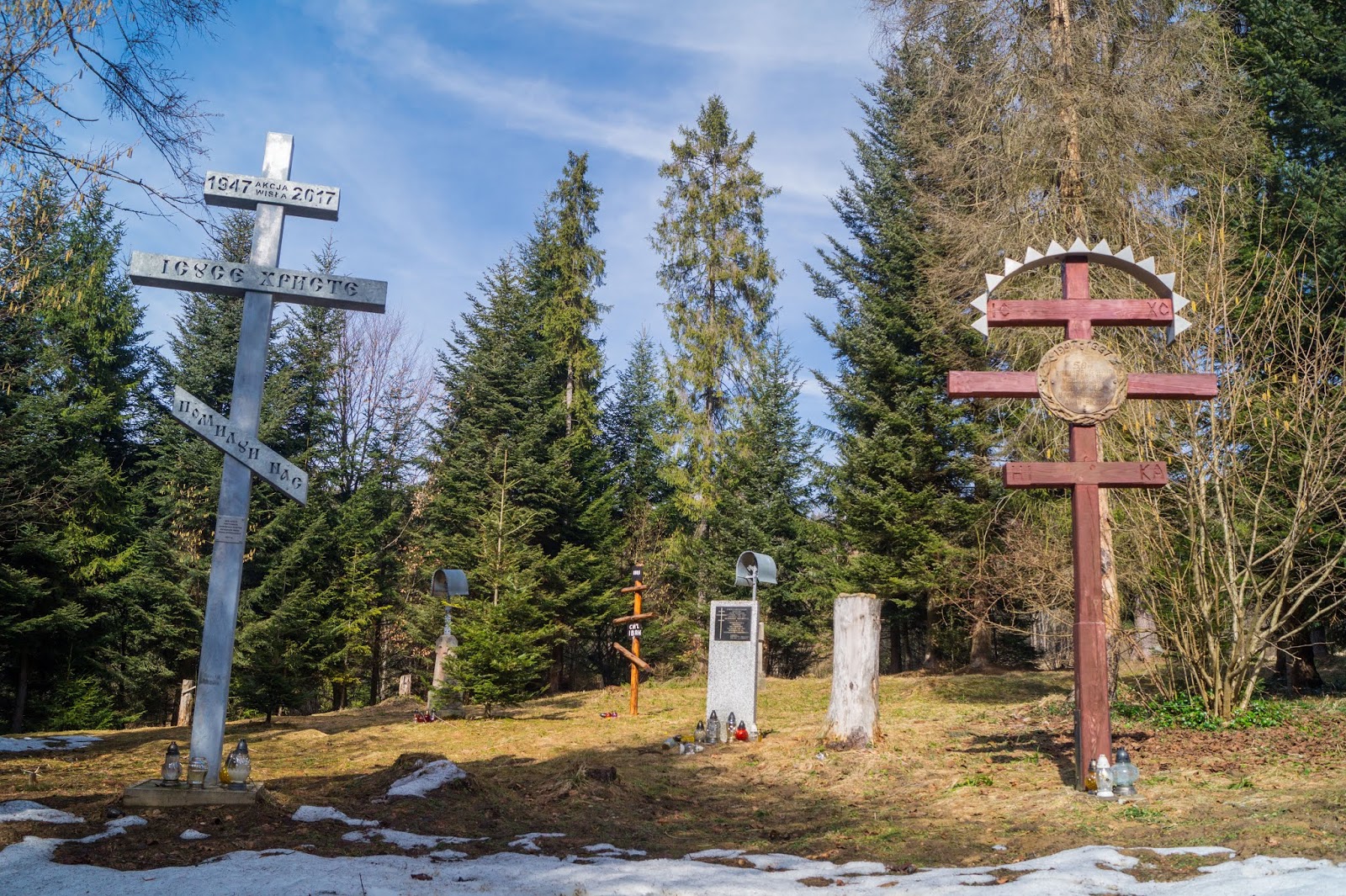
Zooming back into our personal story, it feels necessary to recognize the impossibility of sketching out all the consequences that this displacement had on our family – the rupture that this event had on the trajectory of our family’s lives is far too profound to even begin to imagine what could have been otherwise. Despite my personal involvement with the subject, I will try to describe some of the effects of the displacement.
My grandfather had a lasting problem with addiction, and my grandparents separated long before both of them passed away. I strongly believe that my grandfather’s addiction and the unhappiness of my grandparents’ marriage is intimately related to the violence they suffered during the Vistula Operation and its aftermath. I have no doubt that the separation from the place they called home and their rich heritage wrecked an irreparable damage on their ability to trust, love, and welcome care.
As an effect of my grandparents’ displacement, my father and his brothers as well as myself and my sisters grew up in the Restored Territories where my grandparents were resettled to. We have lived our lives as Polish citizens, while experiencing real consequences of the Operation Vistula and carrying a sense that a piece of our identity is missing. Perhaps this missing piece can only be present through its absence – as an enigma which is unknown even to its host, yet it remains. It persists. It haunts.

My trajectory as an artist living abroad in London, Berlin, and New York complicates my relationship to my Łemko heritage. I speak English day to day, which makes my relationship to Polish (my mother tongue) and by extension to Łemko language increasingly more estranged as time passes. I am also more distant simply in geographical terms. As part of my education and my work as an artist, I have learned to use specific cultural codes, endemic to the global village’s capital cities, which allow me to function in the contexts I find myself in. Those cultural codes are ways of talking, expressing oneself, moving, acting, and relating to others which makes sense in Western metropolises but wouldn’t communicate in the same way where my family comes from. By knowing how to act in this unfamiliar space in order to be accepted, by enacting this cultural mimesis in which I adopt foreign behaviours, I am safe and understandable in the context which I find myself in. By my own choice, I repeat a similar gesture that my grandparents were forced to make – I learn the ways and the language of the people who surround me, in places which are foreign to me, allowing me to blend in and live my life as a decent, coherent individual.
Yet, I am hybrid: there’s an absent presence inside me, and opaqueness-to-myself, an (un)forgotten, irresolvable enigma which persists. This opaqueness-to-myself has to do with the fact that I remember and yet I do not, I know and yet I do not, I am visible and yet I am not. Opaque, impenetrable, foreclosed – yet still here, stubbornly, painfully, euphorically, in its full embodiment. An inheritance which cannot be grasped with understanding but rather must be sensed with respect. A difference which escapes recognition. As a lived experience, it acts as a reminder of our unfamiliarity to ourselves and the impossibility to really know oneself, while it constantly grants the possibility to practice the art of noticing. In a metaphorical sense, intergenerational memory is like a well which has no bottom, inviting one to listen closely to the sounds echoed in that well, and to reach deeper and deeper into the depths of ancestral knowledge through remembering what cannot remembered. Opaqueness, while impenetrable, does not cease to be visible, but rather obscures by becoming hypervisible. It insists as it persists as it resists.
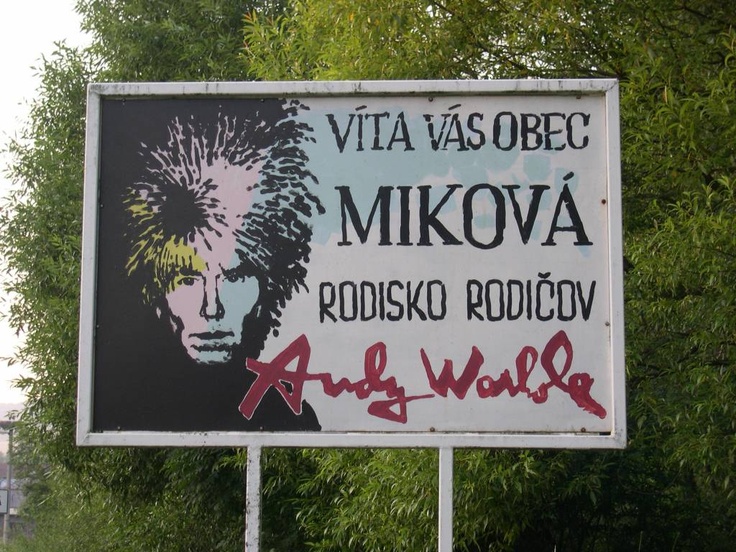
Andy Warhol was a child of working-class Łemko immigrants from Miková (less than a 60 miles from where my grandparents came from). According to Rusinko, “Andy’s attitude toward his ethnic identity was characteristically flippant. He claimed at various times to be from Hawaii, to have Cherokee blood, and even to be from another planet” (Rusinko, 2019, 4). When his biographer Bob Colacello inquired about his background, he replied “I come from nowhere” (Rusinko, 2019, 1). Warhol’s extremely vague, misleading, and absurd accounts of his heritage have caused a great sense of confusion around his identity, which at various times became confused as Polish, Czech, Slovak, and others (Rusinko, 2019, 4). As the most prominent figure of contemporary art of Łemko origin, Warhol certainly did not take this opportunity to make Łemko heritage known to the world. Something else seems to be at stake for him than politics of representation – perhaps an opportunity to remain elusive and resist categorization or identification. It is possible that Warhol would agree with Foucault when the French philosopher wrote “(v)isibility is a trap.” (Foucault, 1979, 215). Thinking with José Esteban Muñoz’s notion of disidentification (Muñoz, 1999), Warhol’s refusal to perform or make his background visible may be read as a disidentificatory gesture against the invitation to perform his minoritarian identity for the enjoyment of the elites so that it can be kept in a visible, controlled spotlight. Considering Warhol’s deep involvement with (American) pop culture, his resistance towards having his background identified could also be seen as an extension of his project around pop, celebrity culture, advertising, seriality, and commercialism, and his process of becoming one of the most famous and unquestionably American artists in history. However, it is the simultaneity of Warhol’s silence on his background and Łemko erasure and displacement which raises questions about the relationship between these two events, and complicates the status of performances of (in)visibility in the context of Łemko identity even further.
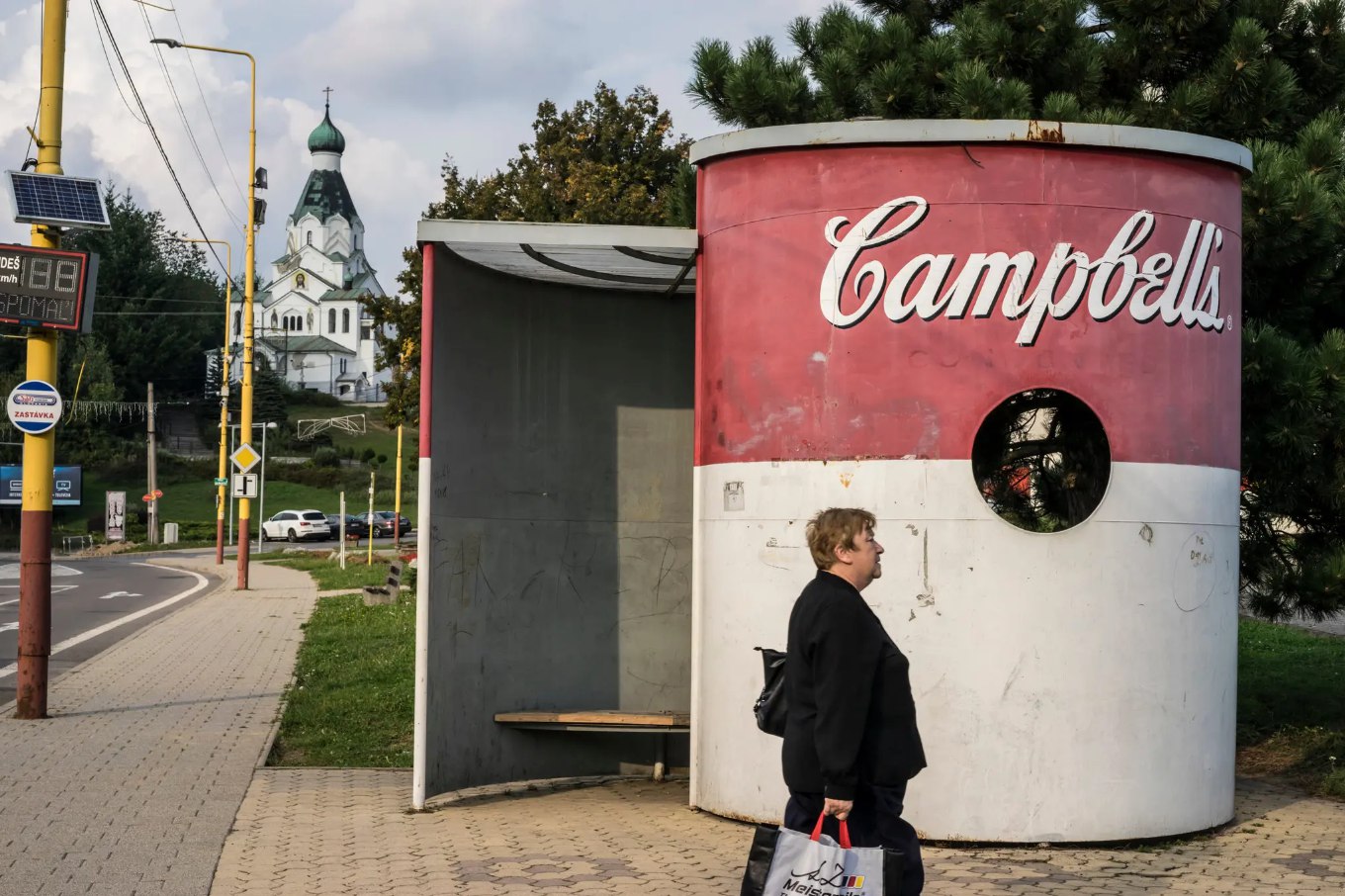
As I write this essay, I am eating Campbell’s soup for dinner, wondering if I can somehow meet with Warhol’s spirit through the medium of the soup which he apparently ate every day for twenty years (MoMA website, 2023). As I eat Campbell’s soup, I turn to Warhol to ask questions which keep arising for me as I continue wondering about the depths of the personal and the political in the context of Warhol’s work, his roots, and Łemko history. I ask him: Andy, why did you do it? Why did you not claim to be Łemko? Why did you give these strange answers whenever someone asked you about it? Were you not aware of your origin? Did your parents choose not to cultivate their heritage after migrating to America and why? And if you knew about your background, did you know about what was happening in Łemkowszczyzna? Was there an element of resistance towards anti-immigrant agendas in your answers? Was there a refusal to being identified, to the politics of minoritarian (in)visibility, to being subjected? Would you choose to resist having your background identified in the same way today, in 2023, when artist’s identity plays a significant role in the shaping of their career? Would you choose to perform (in)visibility in any way different in 2023? Would you still be interested in celebrity culture and fame, and would you make different commentaries on it? How would you relate to your Łemko background during the Internet age? Did you cultivate any form of relationship with your heritage without anyone knowing about it? Did you sense any opaqueness-to-yourself? Did your body remember what it could not remember?
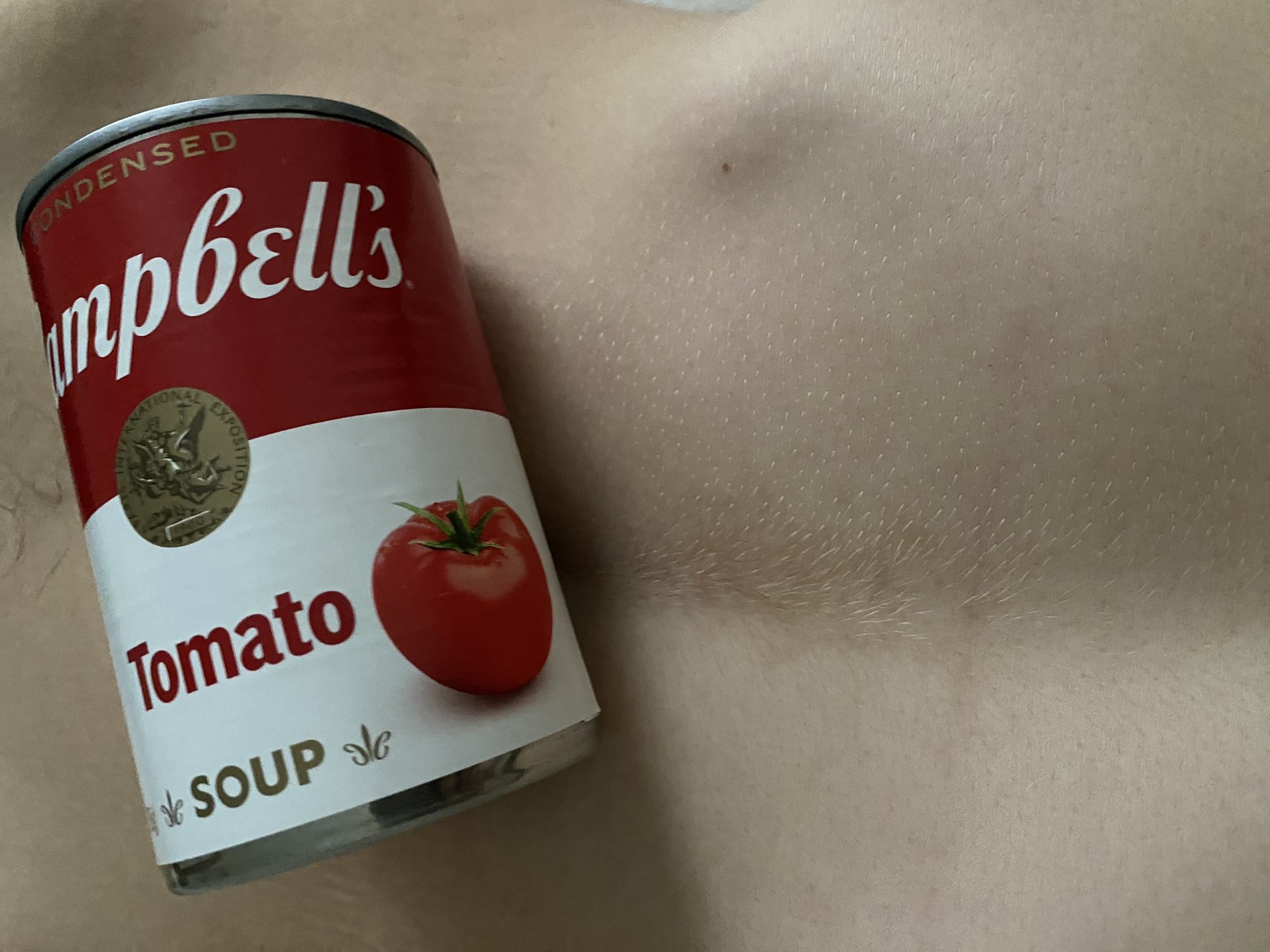
Andy remains silent. As if he was trying to say: figure it out yourself.
I am eating the soup and I cannot help but think that its color resembles blood. Then, I suddenly realize that the soup itself is not visible in the paintings – only the containers are. Opakowanie is the Polish word for a container. Opakowanie, opaqueness. It is as if Warhol fooled me – all this time I thought I was looking at soups, but there is no soup in sight. The soup isn’t visibile, but rather it acts through its opakowanie/opaqueness, through being hypervisibly obscured. The soup is opaque-to-itself. The soup, like blood, performers (in)visibility.
Monika Błaszczak
Aesthetics of Trauma / Aesthetics with Trauma: Performing Visibility and Invisibility in Bill T. Jones’ Still/Here
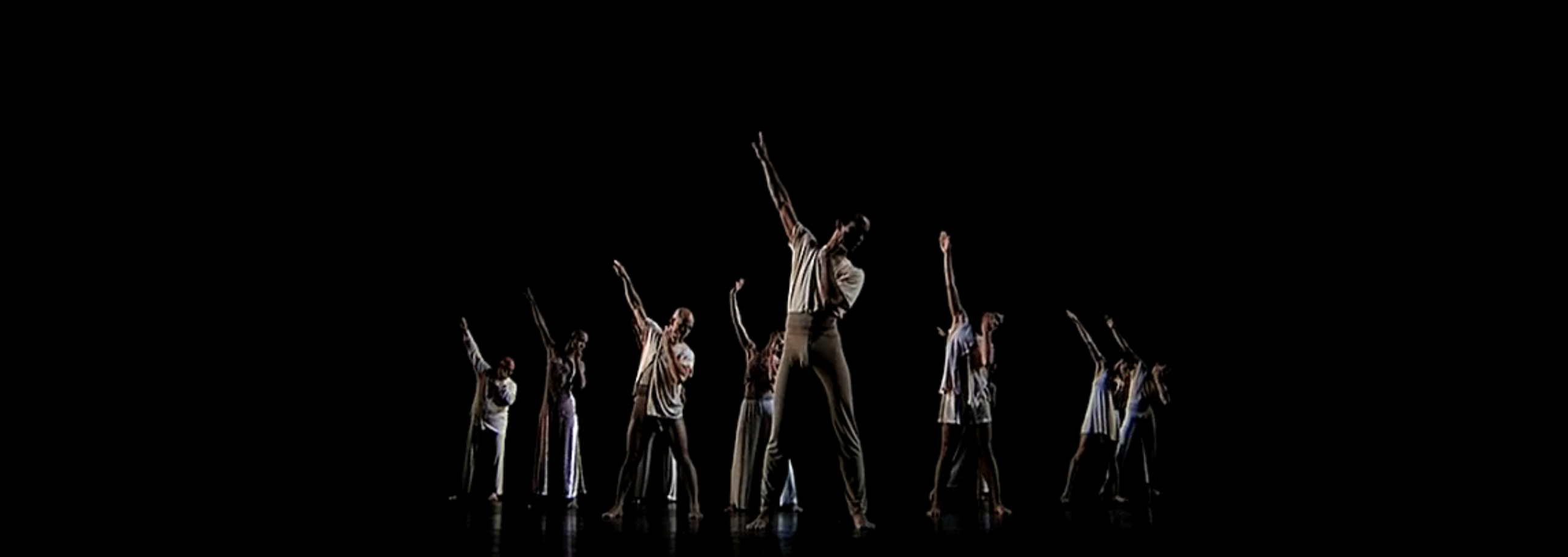
Encountering
A dancer stands onstage alone. The haunting sounds of Odetta’s voice singing “I’m still here,” accompanied by a selection of string instruments starts to fade away. The dancer moves into a solid balance on one leg with their torso tipped forward creating a straight horizontal line from head to toe. Slowly they melt their back leg down to the ground while rolling their spine up to vertical only to come back to a balance on the other leg before seamlessly and soundlessly dropping to the floor. As the music is replaced by the sound of gusting wind, the dancer rises, steps towards the back of the stage into a wide fourth position, gracefully lowers down into a grand plié with arms stretching out to the side like the wings of a bird unfurling at the moment of flight, back arching slightly to make room for this full expansion. The lights fade and that’s when it happens.
The face of a what seems to be a young adult appears on the back wall. The projection is tinted blue making the whiteness of the face pop out and the darkness of the eyes and hair fade into the background so that face seems suspended, dislocated, and spectral. It only lasts for a brief period, fifteen seconds at most, during which the face remains so still it seems as if it might be a photograph. But then the clapping of the next soundtrack starts, the stage lights come up, and two dancers become visible on the stage, and the face tips their head towards the ground and fades away. As the memory and the imprint of the projection lingers, the dancers start to perform a step similar to a jig before transitioning into the roger rabbit, high fiving, and draping their arms around each other’s shoulders. Their playfulness and quick movements stand in stark contrast to the stillness of the young person from the projection. This is what youth is, quick steps, high energy, joy and embodied presence, not an almost frozen video projection, somber and removed.
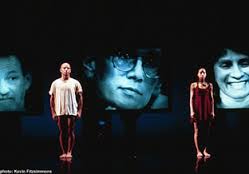
This is the first moment from Bill T. Jones’ Still/Here (1994) in which projected video of people living with terminal illnesses is shown between and amongst the movement of the live, trained, dancers of the Bill T. Jones’/Arnie Zane Dance Company. The people in the videos are some of those that participated in workshops with Jones during the years leading up to the piece, from 1992-1994, which formed the basis for much of Still/Here. In the introduction to the made for television version of the performance, the video explains “The intent of the workshops was to see what could be collected from the experiences of people living with life-threatening illness that could inform a dance/theater work.” The projections of various participants continue throughout the piece: sometimes the people are moving, sometimes it is just their face. Other participants appear through sound recordings discussing their hopes, fears, and imagined deaths. Some of these stories inspire original musical compositions, such as the piece “Slash, Burn, Poison,” which tells of the violence of breast cancer treatment and the loss of oneself through the loss of a body part. As this track plays, one, then more femme performers move around the space, one hand on their breast the other on their crotch. But the truth is, in all the ways that the participants of these workshops appear, they rarely do so for an extended amount of time and never live. We hear their voices, see their faces, and maybe a pose they inspired, but that’s it. On the other hand, we are constantly confronted by the bodies of the performers. We watch them move, we see them sweat, we hear them breathe. We are repeatedly reminded of their corporality. They are foregrounded, literally, while the workshop participants, when they do appear, are projected against the back. In a piece such as this, which deals with and draws from individuals’ experiences with illness, what does it do to not have them live on stage? What is made visible through the relationships between the workshop participants and the live dancers? What is invisibilized? How does the overarching topic of trauma inform how this (in)visibility is being performed?
My interest in Still/Here began my junior year of college when we watched the Bill Moyers special documenting the workshops Jones led with groups of people experiencing life-threatening illnesses, the products of which ended up forming the source material for the final work. I was simultaneously uncomfortable and intrigued. As a cancer survivor, I remember leaning forward on the table towards the screen, hoping, and fearing, to find myself in their stories. As a trained dancer and choreographer, I was eager and wary to see how Jones used this material in his choreographic process. What movement would he use? Whose stories would he tell? How would the dancers embody these experiences, so unlike their own? Would it feel respectful? Would it feel exploitative? Would it seem genuine?
When I finally saw a video of the piece, I was surprised—the movement of the dancers was so polished, so virtuosic, so trained—I had trouble finding the people from the workshops inside of it. Unlike the dancers, who were live on stage, the workshop participants were not present, in the sense that they were not physically there. When they did appear, they showed up as projections on the back walls, audio recordings, and spoken text. I kept returning to the same questions: What was the relationship between these trained dancers and the workshop participants? What made the piece Still/Here art (though some have questioned this label which I will expand upon later), and the phrases and movements created in the workshops not art? How does an artist, especially a choreographer or creator working with live bodies, bring trauma into the realm of the aesthetic world in ethical, respectful, and meaningful ways? How does trauma as aesthetic trouble, come into conflict with, and/or support a kind of virtuosity?
As I watched Still/Here for the first time, I found myself waffling between an orientation with the dancers on stage, the participants in the workshops, and neither group at all. I wanted so deeply to like the work, a sensibility I know should not be central to critical dance analysis, but liking this piece felt urgent to my twenty-one-year-old self. If I liked it, perhaps there was space for me and my experiences on stage. If I disliked it, what would I be saying about my body, my scars, and my limitations in terms of their place in dance performance? Through multiple viewings of the piece and continuously returning to these questions, I have definitely found an appreciation for the dance, though I cannot say that it is one of like/dislike, which is probably a more generative space to be in.
On Liveness
It is difficult to think through Still/Here without considering the relationship that both the workshop participants and the dancers have to the notion of liveness and what that does, or might do, in what they are performing. As touched upon in the previous section, the workshop participants—who are all people living with terminal illnesses—appear throughout the piece only has video projections, voice recordings, or re-enactments by the dancers on stage, whereas the dancers only appear live. Is there a privileging that is happening in how these two groups of people are being presented through the piece and, furthermore, is their presence in these two modes doing something different?
In their analysis of artist Festa’s work Untitled Dance, Peggy Phelan in their book, Unmarked: The Politics of Performance, proposes presence, liveness, and visibility as occurring in and through the act of performance. “The twenty-four hour performance,” Phelan writes, “defines the Present (Festa’s body) as that which continually suspends and thus prohibits the intrusive return of that death and the appealing possibility of that birth…both are required for the Present to be present, for it to exist in the suspended animation between the Past and Future” (1993, 156). This is to say that Festa’s body becomes—present, alive, visible— in this moment of performance. How might we think about this idea of performance, liveness, and visibility in Still/Here? If we are thinking with Phelan, in that performance allows for a kind of visibility, and perhaps a kind of subjectivity, are we to see this as a possibility only available to the live performers on stage? Are, and in what sense than, are the workshop participants present?
While, Phelan suggests a kind of becoming that happens in and through liveness or live performance, Jose Muñoz offers a different perspective on liveness, one that is steeped less in the possibility of becoming and more in the exclusion of futurity. For Muñoz, liveness is a burden that minoritarian subjects must bear. The burden of liveness requires that the minoritarian subject always “be live” in order to exist and in so doing, “means that one is denied history and futurity,” thus “only exist[ing] in the moment” (Muñoz 1999, 189). Through this lens, is it possible to see Still/Here as releasing or relieving the workshop participants from this burden of having to perform to their liveness, as well as creating the circumstance that gives them access to a history, through text and video that circles around illness but extends beyond and before diagnosis, as well as future, in the archivable nature of the medium in which they appear, and their ability to be still here, even after they pass. The presence or visibility of the workshop participants is even further heightened when one considers the documentary produced by Bill Moyers, specifically focusing on the workshops, which acts as another kind of container for memory or remembering of the participants, but is also, quite literally, more accessible than documentation of the performance, the latter of which can only be viewed at and through the New York Public Library for the Performing Arts whereas the former can be found on Vimeo.
Using both Phelan and Muñoz’s notions of liveness, perhaps we can understand the presence of both the dancers and the workshop participants, less in a hierarchical relationship of privilege, where one group overshadows the other—though there are moments in the piece where the movement of the dancers obscures or makes secondary the projection, and times when the narrative of the participants makes the movement seem irrelevant—and more in terms of a performance of different forms of memory or remembering. One fixed and the other emerging. One the archivable the other embodied? At the same time, it is also important to remember that these modes of memory are both existing in the same dance performance. As many things are, the relationship between the performance of the participants and the dancers is more than a binary of this or the other, and instead is one more of this and the other, among and between.
Virtuosity as (In)visibility
While how, in terms of the medium, in which the dancers and participants show up creates one kind of tension in the work, the way they show up, in terms of their “technical training” provides another. Aerial Osterweis’ writing on virtuosity, more specifically the disavowal of virtuosity in the work of Yves Laris Cohen, Narcissister, and John Jasperse, provides a fruitful framework to think through some of these moments of Still/Here. After establishing a definition of virtuosity as “unnamable excess” which proceeds ability and technique, Osterweis identifies the ways the above artists work with this excess in ways that trouble the satisfaction of an anticipated climax or release so often tied to this performance of virtuosity (2020, 433). In the second to last section of Still/Here, the speed quickens as dancers perform jerky movements—one of the few moments in which the performance by the dancers toes the line between control and out of control—as a strobe light or projector light catches and releases them.[1] To increase the sense of chaos and building energy, “Gods Gonna Cut You Down,” plays in the background framing the movement as violent and damning. Right when it reaches a peak, Jones let the pressure release. The sharp movements stop. The weight of the music lets up. A video of water drops appears on the back wall, soothing and steadying, and a melodic string composition starts to play. Jones ends this section with a clean satisfying line of dancers going from high to low, from front to back, the neatly divides the stage in half.
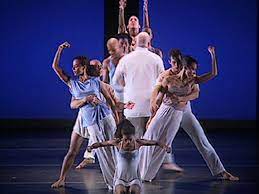
If Still/Here seems invested in a kind of virtuosity, what is that investment doing? “Virtuosity,” Osterwies writes, “is characterized by nonchalance in the face of overachievement” (2020, 434). There are moments in the dance, at least the version made for television, which includes close ups of the performers, where one can see the effort, or at the least the remnants of effort—the sweat soaked shirt—of the dancers, but for the most part they make the movements look easy; effortless. This contrasts the movement of the projected workshop participants, which are, for the most part, minimal. This positioning of “trained” and “untrained” movers is a theme in Yves Laris Cohen’s work, the positioning of which, Osterweis notes, works to minimize the excess of virtuosity. “This pairing,” Osterweiss writes, “places pressure on the cult of the seemingly sacred, gifted individual championed through much of dance’s conventional thrall to virtuosity” (2020, 436). This is not the case in Still/Here, which instead of thwarting the effect of virtuosity, works to enhance it, thus creating a greater distance between the technical ability of the dancers and the participants. Why might these two works have opposite impacts?
Unlike Laris Cohen’s work, in which both performers exist together on stage, the participants in Still/Here exist as projections. Through large in scale, their flatness and positioning make it easier to turn one’s attention away from them and towards the live performers. There are also moments of movement imitation, or mirroring, in which a dancer performs the same movement as the projected participant. This is a case for a section in which a video of a participant performing martial arts kicks is accompanied by a dancer executing the same moves. The kicks of the person in the video is utilitarian, they embody a training of kinds but one different from that of the dancers, whereas the movement of the dancer is stylized, imbued with excess, such as pointed toes and emphasized spiral in the torso. While this excess actually works to flatten the movements in this case, it none the less creates a distance between the two people. This is not a moving with, but rather a moving away.
Where Laris Cohen may be tempering virtuosity, or excess, Narcissister leans in and beyond, working with a too-muchness that plays with one’s expectations of virtuosity (Osterweis 2020, 440). Narcissister’s work simultaneously includes actions such as pulling items out of her vagina as well as classical Horton-style turns. Osterweis notes that these references to or citations of a specific kind of technical training, the Horton-style turns, as a black performer, is a “comment on expectations and imperatives for popular black performance to be presentational, outwardly directed, and deliberately kinetic” (2020, 441). This burden of expectation as a black performer that Osterweis identifies and Narcisissister plays with, could be seen as present in Still/Here. As a black, gay, HIV positive choreographer and dancer, what expectations does Jones carry? It is perhaps generative to consider the work of Still/Here alongside Neil Greenberg’s Not-About-Aids-Dance (1994). Greenberg, like Jones, is a gay, HIV positive, cis-man, and like Jones, is also working with illness and death connected to the AIDS epidemic around the same time. However, unlike Jones, Greenberg, is white.
Even without viewing the two dances, we can already note the ways that the titles of each dance perform their own kind of doing: Greenberg’s title invoking presence through absence—this dance is not about AIDS but it very much is—and Jones’ title performing a kind of declaration, a call to acknowledge: we are still here. This performance is important because it is similar to the way that “neutrality” performs in dance, and beyond, as a kind of absence of identity, as opposed to an acknowledged set of identities. Like Jones, Greenberg utilizes projection throughout Not-About-Aids-Dance, but instead of projecting bodies, he projects text. Some of the text directly references loss and illness such as the first projection which reads “This is the first material I made after my brother died,” as the dancers take the stage. Or towards the middle of the piece when the words, “This is what my brother Jon looked like in his coma” are projected as a dancer stands alone on stage, both elbows bent, arms up towards his ear with the index finger of one hand extended and the palm of the other cupped and facing out towards the audience. Other projects seem to reference the dancers or the process of making such as “When Jo was away Justine performed Jo’s solo in a wig.” Where the projection in Still/Here seems to present a full narrative, Not-About-AIDS-Dance use of projections plays with a kind of distance that actually works to create more of a conversation between, as opposed to a layering of and on. When the first projection references the phrase made after Jon’s death, is it referencing the one the dancers are performing? Is the shape assumed by the dancer the shape of Jon in a coma? Is the solo Justine performed in a wig the one Jo is about to perform?
This comparison is in no way to say that one choreographer’s work is better or more impactful, or to claim that race is and was the defining factor between the way these two choreographers approach movement. Rather, it is to point out the differences as a way of thinking about the way that race may have shaped, or made visible or possible, certain movement systems expected allowed, or transgressive for each choreographer. My descent into virtuosity, technique, and training, is not solely a theoretical exploration or descriptive exercise, but rather, an important step in showing the large impact it has on what works are seen as art/aesthetic, and therefore what narratives, experiences, identities, and forms of embodiment are made visible or invisible.
Disinterestedness vs. Trauma and Disinterestedness as Trauma
I have argued above, that the work of virtuosity in Jones’ Still/Here creates a distance between performer and workshop participant, and in some instances, the too-muchness or over-presence of the performers body covers up the bodies and experience of those participants. In my experience of the work, narratives of illness are, in many ways, overtaken by acts of embodied excellence. For dance critic Arlene Croce, however, the piece screams illness and trauma. It is hard to say that Croce experiences trauma as visible in the work, as she never saw the piece, however, she nonetheless published “a review” of the work’s New York City debut at Brooklyn Academy of Music titled “Discussing the Undiscussable.” Croce’s article is significant, less in thinking through what is or isn’t present in the work itself, and more in the way that Still/Here fits inside of what is “allowed” or “acceptable” within the realm of capital “A” Art and capital “D” Dance.
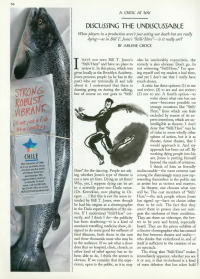
For Croce, Still/Here does not fall into the category of “Art” precisely because its narratives of illness and death, as well as its inclusion of bodies—largely through projection, but also in some of the performers onstage[2]—that do not conform or fit within the ‘neutral body,’ by which Croce seems to suggest the white, slim, heterosexual, able-bodied body[3], places the piece outside the realm of the disinterested and into the category of “victim art” (Croce 1994, 55). In her argument, and through the invocation of “disinterestedness,” Croce situates herself within a Kantian frame of beauty/aesthetics which argues that an object can only be beautiful if there is a distancing or removal of the self from the object (Kant 1987, 84) that is there is both an agreed upon idea of what beauty is, universal subjectivity, (ibid., 90-91) and that it is not serving an additional purpose, like that of the agreeable or the good, (ibid., 84-88). In this understanding of aesthetics (art), Still/Here, and one could extrapolate trauma, illness, or any identity outside those that comprise the ‘neutral,’ cannot be present because we can never fully distance ourselves from them. They mark us.
While Croce’s article makes many claims and statements about what constitutes “Dance” and the future of the field—downhill in her opinion—it does conclude as what reads as a lament for what she sees as the role of the critic, claiming that the “self-declared cases of pathology,” in reference to Jones’ Still/Here and the work of Robert Mapplethorpe, “have effectively disarmed criticism” (Croce 1994, 58). Illness and trauma have no place in art or criticism for Croce. Not only can we understand this view as ableist (and racist, sexist, homophobic, classist, etc..) it is also reductive and condescending, as Croce claims that the work cannot be critiqued precisely because it includes sick or “othered” bodies that we are required to feel bad for (ibid., 54). Is there no other way of viewing illness than through pity? Additionally, while Croce focuses most of her argument on the reasons why trauma does not belong in art, she fails to address what I argue is the trauma inherent in training and performing virtuosic and disinterested art that she is arguing for.
If beauty (aesthetic judgements), as Kant argues and Croce defends, requires a lack of personal investment in the art object and sense of separation from the art object, is it ever really possible to achieve in performance, dance in this case, in which the object is the body? Croce writes that “in theatre, one chooses what one will be,” only immediately followed by the claim that the sick people in Jones’ work “have no choice other than to be sick” (1994, 54). Does this mean that sick people do not belong in on the stage? I believe this is what Croce is saying, however, in the contradiction of the sentence Croce also makes visible the false, or socially constructed, idea of choice when it comes to one’s identity and how one is perceived. Those that are seen as having choice are not devoid of identity, but rather possess, or pass, as an identity that is marked by absence—not-black, not-disabled, not-too-visibly-queer—and it is through that constructed-absence that isn’t actually one, that a person can take on other identities, or “choose what one will be.”
In her book I Want to Be Ready, Danielle Goldman writes, “one does not check one’s ‘everyday body’ at the door upon entering a studio or a concert hall, and one’s artistic choices are never entirely separate from the broader social world in which one lives” (2010, 9). In contrast to Croce and Kant, Goldman’s body is a complete one, not fragmented and distanced. Goldman’s body carries a narrative of self from their home, to the street, to the studio, and onto the stage; they can’t not. If we think about these two bodies not only in terms of the subject of trauma but also through the lens of trauma, we can also see this call for disinterested art as a kind of trauma. In The Body Keeps the Score, Bessel van der Kolk identifies the actions of dissociation, a splitting or fragmenting of the self, of which depersonalization, a numbing or turning off of the brain, is a symptom, as the “essence of trauma” (2014, 66). Trauma, as defined by dissociation becomes an act of distancing and fragmenting, in much the same way that disinterestedness calls for a distancing of self and object. With both dissociation and disinterestedness performing in similar ways, we can start to see the way that the kind of Dance that Croce is lamenting is actually, in some ways, an aesthetics of trauma.
In and Towards a Future(ity)
Perhaps a coming together between the participants and dancers can be seen when one participant exclaims during one of the recordings, “the questions that people who face serious illness have are questions that all thoughtful adults have but just don’t think about.” Is this the key: we [the participants] may be ill now, but you [the dancers or the audience] could be us one day? We all have these thoughts, and in this way, we are the same. This feels too neat a bow to tie around this piece, but perhaps there is some truth to it. Jones himself seems to embody this intermediary liminal space, as a trained dancer and HIV+ man. Absent in body throughout the piece, Jones, via video, makes an appearance for the first time in the last five minutes of the dance. A video of him talking and moving plays on a small television screen that is rolled around the space by dancer. Unlike the workshop participants, whose positions remained fixed along the back wall, Jones is mobile. However, unlike the dancers who perform live, Jones only exists on the stage in video form. In this way he occupies both worlds of the performance.
In the last section of the dance, Jones asks the dancers, and one could argue the audience, to imagine their deaths, an exercise he performs with the participants in the workshops. As Jones questions play—what time of day is it, who is with you—the dancers move about the stage performing phrases and movements from throughout the piece, sometimes alone and sometimes together. The images projected on the back wall turn into a chaotic real of body parts rapidly cut together so that one can only recognize a few: a hand, a heart. The stage lights shift to yellow. With much of the piece occurring under blue or red lights, the yellow signals a change. When the lights go out and the music cuts, a relief settles in: a release from the chaos? Permission to stop imagining one’s death? The opportunity to re-invisiblize mortality?
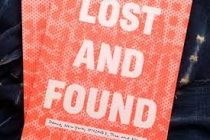
In “You Are Here: H.I.J.O.S and the DNA of Performance,” Diana Taylor writes, “In performance, behaviors and actions can be separated from the social actors performing them…Traumatic experience may be transmittable, but it’s inseparable from the subject who suffer it” (2003, 168). Where then does this leave us with regards to the space of trauma in performance? Taylor, in understanding the way that trauma can ignite and sustain protest, suggests an emphasis on the “public, rather than private, repercussions of traumatic violence and loss” (ibid.). If we broaden our perspective beyond the form and content of Still/Here itself, we can start to see the way that this piece works as a form of public processing and remembering in the wake of the devastation of the AIDS epidemic. In the catalogue for Danspace’s 2016 Platform Lost and Found: Dance, New York, HIV/AIDS, Then and Now, co-curated by Ishmael Houston-Jones and Will Rawls, Houston-Jones writes “how do I quantify an absence; how do I curate an absence,” (2016, 12) since this is what the AIDS epidemic left behind, and what all terminal illnesses, to some extent leave behind: absence. But the absence here need not be a lack as the work of Jones, Greenberg, John Bernd, and countless other artists show us. Croce longs for a return to disinterested art, but this return—if there even is a something to return to—seems impossible following the wake of the AIDS epidemic. In the same catalogue Houston-Jones recalls choreographer Jennifer Monson’s response to his question about if her work was influenced by HIV/AIDS: “How could it not,” she responds. “Anyone living and creating artwork in this community at that time had to have been influenced by AIDS,” (ibid.). Whether directly or tangentially, how can we not bring the traumas our bodies experience into the work we make with them? Instead of turning away, how can we embrace, acknowledge, make visible, and remember these traumas in the work we make. Can we move from an aesthetics of trauma to an aesthetics in and with trauma?
[1] There is a moment in the piece when a dancer moves into an inversion and it seems like the violence or force of the effort to perform the inversion will spill out of the form/shape of the move, only to re-contain itself at the last minute, forming a perfectly vertical shape , supported by the feet of the dancers partners. These moments of near abandon are rare but thrilling for the viewer and allow for a connection to the feelings of disorientation or loss of control that some of the workshop participants speak to and about.
[2] Though none of the workshop participants perform live on stage, there are members of the Bill T. Jones/Arnie Zane Dance Company that perform Still/Here that may not fit with the conventions of “a dancer’s body.”
[3] In “’Discussing the Undiscussable,” Croce writes, “As a dance critic, I’ve learned to avoid dancers with obvious problems—overweight dancers…old dancers, dancers with sickled feet or dancers with physical deformities who appear nightly in roles requiring in line. In quite another category of undiscussiblity are those dancers I’m forced to feel sorry for because of the way they present themselves: as dissed blacks, abused women, or disfranchised homosexuals” (55). In this statement, Croce makes a declaration of what identities and narratives are allowed to make themselves present through “Dance” and which ones must be invisibilized. This distinction is in direct conversation with the notion of “disinterestedness” and a wrongly assumed universality that is actually invested within dominant socio-cultural identities and forms of embodiment.
Nadia Hannan
Eternal Memory, Physical Manifestation of Trauma, and Parón!
By Stacey Manos
In Greek Orthodox culture, when a soul leaves the body, the phrase spoken as a consolation to the loved ones is “As eínai aionía i mními tous.” In English, this translates to “May their memory be eternal.” Eternal memory– what a concept. Memory that lives on in eternity, after the soul and everyone who knew the soul passes on, their memory remains.
My grandmother was diagnosed with Alzheimer’s Disease when I was seventeen years old. As I watched her in my own private agony for the next six years, I pieced together my own version of her memory, through her fragmented storytelling. One story she insisted on telling, sometimes 10 different times in a 30 minute visit, was the story of her first day of school in the United States. Having lost her father and brother before the age of six, she attended kindergarten in Los Angeles, California after immigrating from Greece with her single mother and younger brother. She recalled to me, over and over, “I sat in the corner all day long. I couldn’t sit at a table. At the end of the day, the teacher pinned a note to my dress and sent me home, the note said: ‘Teach your child English.’” As she repeated this story, her eyes widened each time, her mouth twisting in resentment. She motioned with her hand the size of the paper pinned to her dress, almost like she saw the ink writing before her eyes each time.
In The Body Keeps Score, Bessel van der Kolk asserts: “It is amazing how many psychological problems involve difficulties with sleep, appetite, touch, digestion, and arousal. Any effective treatment for trauma has to address these basic housekeeping functions of the body.” (Van der Kolk, 2014, 56) For the majority of her life, my grandmother suffered from insomnia, anxiety, and severe digestive problems. I never knew her to have a good night’s sleep until she became ill with Alzheimer’s. I think alongside van der Kolk when examining this truth, my grandmother’s body fought to protect her for most of her life. Her trauma manifested in physical form. Many individuals do not know why their body is exhibiting certain physical symptoms; she certainly did not. I recall her being seen by many doctors who assured her that there was nothing physically wrong with her stomach. I think of my grandmother’s trauma as a young immigrant child– virtually alone and grief-stricken. Where did the trauma reside in her body? When did it position itself in her stomach and serve as her unwanted protection? And, why did her horrific battle with Alzheimer’s Disease render her with more clarity and more peace than she had known before? I think of her trauma as a demand, a call to become visible through her body. The body remembers, even when our conscious mind does not, in order to protect us from further damage. When her mind was stripped of its memory, it could no longer send the signal to her body to react, to enter fight or flight mode– her body was finally free.
When our body forgets to protect us, what remains? What deserves to remain visible? Anzaldúa writes in her poem “Healing Wounds,” “i hobble here and there seeking solace trying to coax it back home but the me that’s home has become alien without it.” (Anzaldúa, 2002) Anzaldúa writes about what remains after the self has been fragmented. I think of my grandmother’s memory, trying to find its way home, but what will it find? Perhaps a repaired body. For the last year of her life, my grandmother only spoke Greek. Alzheimer’s sometimes works in a regressive manner, people losing their memory from front to back, until they only remember their early childhood, or in her case her first language. Although there is a medical and scientific component to this, I also think of it as an act of rebellion in her final days. I think in her last act, she was determined to be seen. She demanded visibility, even in the face of her cognitive decline. I can see her with a twinkle in her eye, calling her fragmented pieces back to her repaired soul, speaking only her mother tongue, unpinning the teacher’s note from her dress, screaming Parón! Or as Diana Taylor says, ¡Presente!
Works Cited
Anzaldúa,Gloria. Light in the dark = Luz en lo oscuro: rewriting identity, spirituality, reality. Durham: Duke University Press: 2015.
Anzaldúa, Gloria. “Healing wounds.” In The Gloria Anzaldúa Reader. Edited by AnaLouise Keating, 249. Durham: Duke University Press, 2009.
Best, Paul. Reviewed Work: With Their Back to the Mountains: A History of Carpathian Rus’ and Carpatho-Rusyns by Paul Robert Magocsi. The Polish Review 62. no. 4: 85-87, 2017.
Caruth, Cathy. Trauma Explorations in Memory, edited by Cathy Caruth. Baltimore: The Johns Hopkins University Press, 1995.
Croce, Arlene. “Discussing the Undiscussable.” The New Yorker, Dec 26 1994.
Danspace Project Platform (11th : 2016 : New York, N.Y.), and Danspace Project (New York, N.Y.). Lost and Found : Dance, New York, HIV/AIDS, Then and Now. Edited by Ishmael Houston-Jones, Will Rawls, and Jaime Shearn Coan. First ed. New York, NY: Danspace Project, 2016.
Foucault, Michel. Discipline and Punish: The Birth of the Prison. New York, NY: Vintage Books, 1979.
Goldman, Danielle. “Introduction: The Land of the Free” In I Want to Be Ready: Improvised Dance as a Practice of Freedom, 1-27. Ann Arbor: University of Michigan Press, 2010.
Greenberg, Neil. Not-About-AIDS-Dance. 1994. https://www.neilgreenberg.org/naad.html.
Herman, Judith Lewis. Truth and Repair: How Trauma Survivors Envision Justice. New York, Basic Books, 2023.
Jones, Bill T. and Arnie Zane Dance Company Records. Still Here, IDF 323503. Jerome Robbins Dance Division, New York Public Library.
Kant, Immanuel. “Immanuel Kant.” In Aesthetic Theory: Essential Texts for Architecture and Design, 81-92. Edited by Mark Foster Gage and Translated by Werner S. Pluhar. New York: Norton and Company, 2011.
Kneller, Jane. “Disinterestedness.” In Encyclopedia of Aesthetics. Oxford University Press, 2014.
Magocsi, Paul R. With their backs to the mountains: a history of Carpathian Rus’ and Carpatho-Rusyns. Budapest: Central European University Press, 2015.
Muñoz, José Esteban. Disidentifications: queers of color and the performance of politics. Minneapolis: University of Minnesota Press, 1999.
Moyers, Bill. Bill T. Jones: Still/Here with Bill Moyers. 1997. https://vimeo.com/33288787.
Musuem of Modern Art. Accessed 3 Dec 2023. https://www.moma.org/collection/works/79809.
Organization for the Defense of Lemkivshchina. Accessed 3 Dec 2023. https://www.lemko-ool.com/?page_id=30.
Osterweis, Ariel. “Disavowing Virtuosity, Performing Aspiration: Choreographies of Anticlimax in the Work of Yves Laris Cohen, Narcissister, and John Jasperse.” In Futures of Dance Studies, edited by Susan Manning, Janice Ross, and Rebecca Schneider, 431-448. Madison: The University of Wisconsin Press, 2020.
Phelan, Peggy. “The ontology of performance: representation without reproduction.” In Unmarked: The Politics of Performance, 146-166. London: Routledge, 1993.
Pollock, Starik. National Trauma: The Lemko Ethnocide. rusynsociety.com/, 3 Dec 2023. https://rusynsociety.com/2023/06/23/national-trauma-the-lemko-ethnocide/.
Rusinko, Elaine. Andy Warhol ’s Ancestry: Facts, Myths, and Mysteries. Academia.edu, 3 Dec 2023.https://www.academia.edu/38098098/Andy_Warhols_Ancestry_Facts_Myths_and_Mysteries.
Taylor, Diana. “‘You Are Here:’ H.I.J.O.S and the DNA of Performance.” In The Archive and The Repertoire: Performing Cultural Memory in the Americas, 161-189. Durham: Duke University Press, 2003.
Van der Kolk, Bessel A. The Body Keeps the Score: Brain, Mind, and Body in the Healing of Trauma. New York: Penguin Books, 2014.
Wynter, Sylvia. “The Ceremony Found: Towards the Autopoetic Turn/Overturn, its Autonomy of Human Agency and Extraterritoriality of (Self-)Cognition.” In Black knowledges/Black struggles: essays in critical epistemology. Edited by Jason R. Ambroise, and Sabine Bröck-Sallah. 184–252. Liverpool: Liverpool University Press, 2015.
Magocsi, Paul R.. 2015. With their backs to the mountains : a history of Carpathian Rus' and Carpatho-Rusyns. Budapest: Central European University Press, Best, Paul. 2017. "Reviewed Work: With Their Back to the Mountains: A History of Carpathian Rus' and Carpatho-Rusyns by Paul Robert Magocsi." "Reviewed Work: With Their Back to the Mountains: A History of Carpathian Rus' and Carpatho-Rusyns by Paul Robert Magocsi." The Polish Review 62. no. 4: 85-87. Pollock, Starik. 2023. "National Trauma: The Lemko Ethnocide." rusynsociety.com/, 3 Dec 2023. https://rusynsociety.com/2023/06/23/national-trauma-the-lemko-ethnocide/. MoMA.org Accessed 3 Dec 2023. https://www.moma.org/collection/works/79809. Muñoz, José Esteban. 1999. Disidentifications: queers of color and the performance of politics. Minneapolis: University of Minnesota Press, Foucault, Michel. 1979. Discipline and Punish: The Birth of the Prison. New York, NY: Vintage Books,, https://www.lemko-ool.com/ Accessed 3 Dec 2023. https://www.lemko-ool.com/?page_id=30. Rusinko, Elaine. 2019. "Andy Warhol ’s Ancestry: Facts, Myths, and Mysteries." Academia.edu, 3 Dec 2023. https://www.academia.edu/38098098/Andy_Warhols_Ancestry_Facts_Myths_and_Mysteries. Wynter, Sylvia. 2015. "The Ceremony Found: Towards the Autopoetic Turn/Overturn, its Autonomy of Human Agency and Extraterritoriality of (Self-)Cognition" Black knowledges/Black struggles: essays in critical epistemology. Edited by Jason R. Ambroise, and Sabine Bröck-Sallah. 184–252. Liverpool: Liverpool University Press, Caruth, Cathy. 1995. Trauma: Explorations in Memory. Baltimore: Johns Hopkins University Press, Herman, Judith Lewis. 2023. Truth and repair: how trauma survivors envision justice. New York, NY: Basic Books, Hachette Book Group,